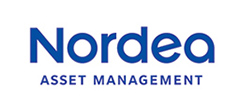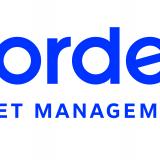By Claus Vorm and Robert Næss, portfolio managers of Nordea’s Global Stable Equity strategy
Investors will look back fondly on the decade following the global financial crisis, as unprecedented monetary stimulus and ultra-low interest rates powered one of the most fruitful periods in history for markets – particularly for growth-related equities.
However, this largely serene environment has since given way to elevated economic uncertainty and increasing market volatility. As 2023 begins, the primary challenge facing investors continues to be historically high inflationary pressures, which are forcing many central banks to aggressively hike interest rates.
With market nervousness persisting, investors are understandably uncertain of where to turn. Despite the ongoing challenges, if we look at markets through a fundamental lens, equities remain the asset class most likely to deliver a robust return able to offset inflation.
But risks in the market have clearly risen, so it is vital for equity investors to be increasingly selective. We believe the most successful companies in 2023 will be those with steady earnings and robust balance sheets, which can be stabilising forces against economic weakness and rising rates.
Stability has not been the most in-demand equity quality over most of the past decade, as investors gravitated towards stocks exhibiting outsized growth potential. But in this new investment paradigm, we have seen how markets have already to reward stable companies.
A combination of qualities
Stable equities are typically less economically sensitive than the broader market, as the businesses produce products or offer services largely essential to everyday consumption. This universe is quite vast, from basic foods and personal care items, through to the provision of utilities and many IT goods and services.
While such companies largely enjoy consistent demand throughout an economic cycle, this characteristic alone is not enough. We believe it is vital to identify companies able to complement steady demand with pricing power. This is particularly important in an inflationary environment, such as the one we are currently witnessing, as companies with pricing power are naturally in a far better position to continue delivering sales growth by passing on cost increases.
In addition to this, it is crucial to target companies with strong balance sheets, which can ensure sales growth translates into earnings growth. Such companies offer an element of inflation protection, without being highly cyclical and vulnerable to recession.
Then there is one final piece of the puzzle: valuation. Investors must keep a close eye on valuation – as a stable company is not automatically a stable share. Stable companies need to be trading on fundamentally attractive valuations, as the market environment in 2022 clearly displayed how much added volatility is associated with stocks at elevated prices.
Exhibit A for Alphabet
At company level, even though the technology/communication services sectors have typically been associated with the more turbulent high-growth segment of the market, we have identified a number of resilient leaders within the space. For example, we are optimistic on the long-term prospects of Alphabet, the owner of Google.
Alphabet has enjoyed strong earnings growth for more than a decade – driven by its leading positions in Google Search, Maps, mobile operating systems, consumer content, and advertising. The company’s sales are not overly economically sensitive – with secular growth driven by continued mobile and video usage, Google Play activity, and the expansion of the connected device. As you can imagine, brands such as Google Search, the Android operating system and YouTube also enjoy strong pricing power.
With strong expense discipline, Alphabet’s sales growth translates into earnings growth – while its balance sheet is robust, with no debt and a high return on capital. As for its valuation, Alphabet is attractive in both absolute terms and relative to the market, especially considering its consistent earnings growth and strong balance sheet.
Even though the company was not immune to the pressures faced by the wider tech sector in 2022, its long-term potential has not diminished.
A new dawn for equities
For the first time in almost 15 years, equity markets can no longer rely on the tailwinds of historically low interest rates and unprecedented monetary support. While most investors will still seek an exposure to equity markets, it is understandable if there is an increased desire to reduce risk.
If we are to encounter a period of elevated economic uncertainty and asset price turbulence, we are convinced the market will increasingly appreciate stable business models, due to their strong capital preservation characteristics. The stable stock universe is in a better position to withstand today’s historic inflationary pressures.
Nordea Asset Management is the functional name of the asset management business conducted by the legal entities Nordea Investment Funds S.A. and Nordea Investment Management AB (“the Legal Entities”) and their branches and subsidiaries. This document is advertising material and is intended to provide the reader with information on Nordea’s specific capabilities. This document (or any views or opinions expressed in this document) does not amount to an investment advice nor does it constitute a recommendation to invest in any financial product, investment structure or instrument, to enter into or unwind any transaction or to participate in any particular trading strategy. This document is not an offer to buy or sell, or a solicitation of an offer to buy or sell any security or instruments or to participate to any such trading strategy. Any such offering may be made only by an Offering Memorandum, or any similar contractual arrangement. Published and created by the Legal Entities adherent to Nordea Asset Management. This document may not be reproduced or circulated without prior permission. © The Legal Entities adherent to Nordea Asset Management and any of the Legal Entities’ branches and/or subsidiaries.



